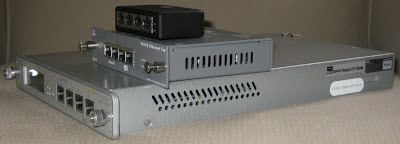Risk Mitigation
If you've been following the last few days of posts, I've been thinking about security from a more general level. I've been wondering how we can mitigate risks in a digital world where the following features are appearing in nearly every digital device. Think about digital devices in your possession and see if you agree with this characterization of their development. Digital devices are increasingly: Autonomous: This means they act on their own, often without user confirmation. They are self-updating (downloading patches, firmware) and self-configuring (think zeroconf in IPv6). Users could potentially alter this behavior, but probably not without breaking functionality. Powerful: A cell phone is becoming as robust as a laptop. Almost any platform will be able to offer a shell to those who can solicit it . There is no way to prevent this development -- and would we really want to? Ubiquitous: Embedded devices are everywhere. You cannot buy a car without one. I ex...



